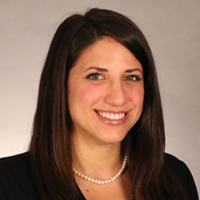
“With this bill, we reaffirm that fundamentally American ideal—that every child, regardless of race, income, background, the ZIP Code where they live, deserves the chance to make of their lives what they will,” President Barack Obama said after signing the Every Student Succeeds Act (ESSA) into law.
ESSA is a rewrite of No Child Left Behind (NCLB), and the eighth reauthorization of the Elementary and Secondary Education Act (ESEA) signed into law by President Lyndon Johnson in 1965. However, it’s unlikely that ESSA, like its predecessor NCLB, will deliver on this promise by flexing its 1,061 pages of new federal regulations on states. On the other hand, school choice, which is absent from ESSA, has had demonstrable success in improving the educational opportunities of students across the country.
Although the champions of ESSA—such as Sen. Lamar Alexander and Rep. John Kline—contend that the law grants more flexibility to states than its prescriptive NCLB predecessor in some ways, small steps in the right direction aren’t enough. ESSA not only kept intact significant federal intervention in local school policy, but also it missed a major opportunity to empower local communities in the process.
Provisions added to the Elementary and Secondary Education Act through ESSA include, but are not limited to:
Increased federal programs and regulations, while well-intentioned, balloon Washington’s meddling in local school policy beyond its share of education financing. States and localities pay for 90 percent of everything that is spent on education. The federal government picks up just 10 percent of the tab but, increasingly, calls more and more shots in the classroom.
That’s one major reason education decisions and programs—even worthwhile options like school choice programs—must primarily be housed at the state and local level. That’s where the funding needed to finance such options exists and where policy will be implemented. Likewise, state and local governments should also be primarily responsible for school choice programs because they are closest—geographically and otherwise—to the people who would be affected by those policies.
However, the proponents of ESSA missed the boat on empowering states to make existing federal funding student-centered by holding back on one of the few appropriate options for expanding educational choice through changes to federal policy.
The tenants of federalism and the reality of federal education financing mean there are very few things Washington can or should do to advance school choice. However, as long as the federal government continues to spend roughly $15 billion annually on Title I programs, which constitute the largest portion of the approximately $24 billion ESSA, states should have the freedom to use those funds how they see fit for their communities. That should include allowing states to make those dollars portable, meaning they follow low-income children to any educational environment of choice—public, charter, private, or otherwise.
Today, convoluted Title I formulas coupled with policies in some states that assign students to public schools based on their parents’ ZIP Codes do not make Title I a vehicle conducive to achieving its primary purpose: “…provid[ing] a good education for every boy and girl—no matter where he lives,” as was President Lyndon B. Johnson’s intention when establishing the initiative in 1965.
By reforming Title I to give states the option to make dollars portable, policymakers would create much-needed flexibility for education providers and families and increase the likelihood of achieving the initiative’s goal.
During the summer of 2015, an amendment to the House version of ESSA (H.R. 5) would have allowed for complete portability of Title I funds, including the ability of students in states that opted-in to have their funds follow them to private schools of choice. But the original amendment including portability to private schools was tabled, and a subsequent watered-down version, which did not include private schools, was considered. Even that weaker option, which would have allowed portability only to public schools and public charter schools, failed to make the final bill. ESSA, as signed into law, allows for no Title 1 portability whatsoever.
This was low-hanging school choice fruit that Congress—with 40 percent of its members having exercised school choice for their own children—still chose not to grasp.
The good news is states are leading the way on school choice, as we think they should be. In fact, 2015 appears to have surpassed 2011, a year the Wall Street Journal coined the “Year of School Choice.” As of January 2016, there are 59 private school choice programs in 28 states and the District of Columbia. Nearly 400,000 students across the nation are now using these programs to access the learning options that best meet their needs. And school choice continues to become more innovative.
Now, parents no longer just have a choice among schools, they have a choice among a vast array of educational options as evidenced by the growing number of education savings account (ESA) programs. In 2015, five states adopted this innovative policy, which allows parents to fully tailor their child’s education through a variety of services and providers. Nevada broke new ground by becoming the first state to enact a nearly universal ESA.
Although the program is available to all Nevada students who have been enrolled in a public school for at least 100 days, students from low-income families who participate in the ESA option will have $5,700 deposited annually into their accounts beginning in the 2015–16 school year. That is slightly more than the $5,100 available to students who are not considered low-income. If Title I portability were established federal policy, Nevada could then opt in to the portability arrangement, and eligible parents could have an additional amount (likely close to $1,000 more) deposited into their ESA, taking their account distribution nearer to $6,700 annually and greatly increasing their education purchasing power.
The problems with ESSA don’t end with its obvious shortcomings on school choice, however. They continue with more structural issues that affect choice in ways that might not be apparent on first blush.
The policies contained in ESSA continue to conflate top-down regulations with parent-driven accountability.
For example, regardless of what one thinks of the relative merits of standardized testing, ESSA, as with NCLB, is premised on students progressing in cohorts through the grades based largely on age, with standardized tests serving in large part as the accountability check on learning. But as we’ve seen at the state level, the only people truly held “accountable” under such a system are the students who too often find themselves unprepared upon graduation. As researcher Matthew Ladner noted of Arizona in 2014:
“Standardized testing is widespread in education, but ‘accountability’ is scarce indeed. So in [Arizona] more or less every public school student takes the AIMS test, but you would struggle to find anyone who is held ‘accountable’ for the results. Forty percent of 4th graders in Arizona scored below basic on the 2013 NAEP reading test, but good luck finding a policymaker, superintendent, teacher or parent who was held ‘accountable’. Strangely enough, no one accepted responsibility for this sad state of affairs, making this a very unique form of accountability where no one is ever held responsible.”
ESSA continues a trend of misguided “accountability” to government actors, far-removed from the students and educators who are affected by the policy.
For instance, federal lawmakers made good headway by eliminating the so-called “Adequate Yearly Progress” mandate in No Child Left Behind, which required that states achieve universal student proficiency in certain subjects or risk federal sanctions. But they maintained federal intervention in school testing schedules by retaining the annual testing requirement for states and creating new “accountability” requirements.
States must now have accountability plans that assign “substantial weight” to quantitative measures, such as graduation rates and performance on state tests, with much less weight allotted to subjective measures, such as school climate and educator engagement. Under ESSA, states are now also required to intervene in the “lowest-performing” 5 percent of schools, have school-level interventions in schools in which subgroups of students perform poorly, and intervene in schools in which fewer than two-thirds of students graduate.
Apart from being overly prescriptive and outside the purview of federal authority, absent parent choice, these “accountability” measures mean very little.
For instance, there are now five states with education savings accounts. As Arizona continues to demonstrate year after year, families are using their ESAs to completely customize their children’s educational experiences. Many students take individual courses online while coupling selected curricula with private tutoring. Families are harnessing the Internet, innovative education therapies, and private schooling to craft self-paced learning plans for their children.
Unlike ESSA, educational choice reforms decentralize education and place accountability directly with the parents, who, through their education savings accounts for example, can choose another learning environment if one isn’t working. Parents being able to “vote with their feet” is a far more robust means of creating accountability in education than any type of impersonal, arbitrary, top-down federal mandate.
Unfortunately, it will probably be another five—or if the overdue rewrite of NCLB was any indication—15 years before Congress takes another pass at reauthorizing the Elementary and Secondary Education Act. But at least ESSA does not constrain states in any significant way from advancing school choice. And advance they should.
*Opinions expressed by our guest bloggers are their own and do not necessarily reflect those of EdChoice.

Lindsey Burke is Director, Center for Education Policy and a Will Skillman Fellow in education policy at The Heritage Foundation, where she researches and writes on federal and state education issues.

Brittany is a State Programs and Government Relations Director for the Friedman Foundation. Prior to working at the Foundation, Brittany was a Domestic Policy Research Assistant in the Institute for Family, Community, and Opportunity at The Heritage Foundation, where she conducted policy research and writing on education, welfare, and family issues.
RELATED POSTS
Updated September 12, 2024

Ann Marie Miller
Updated September 11, 2024